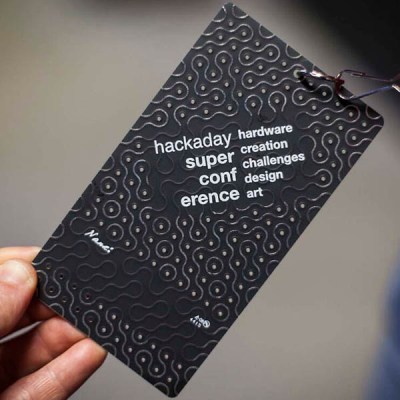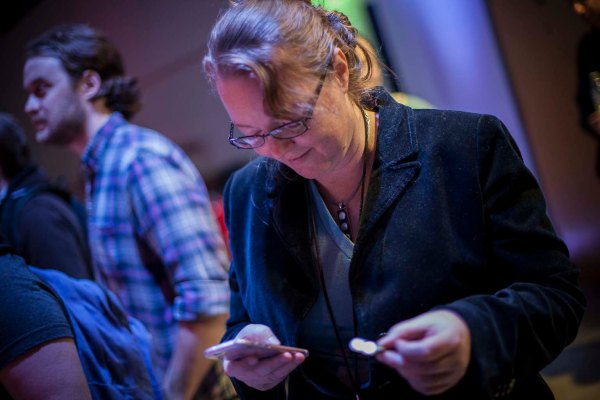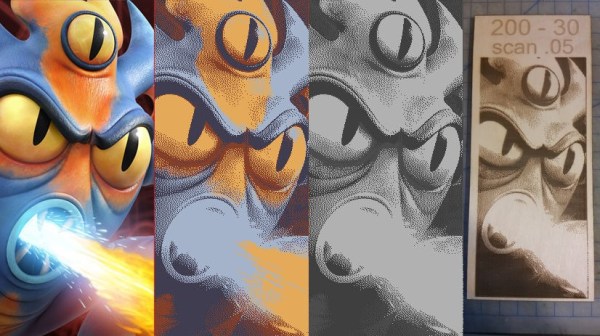 As with any proper hardware con, the Hackaday Supercon needed a badge, and preferably one that was electronic. This conference centered around hardware creation, and the badge was no exception.
As with any proper hardware con, the Hackaday Supercon needed a badge, and preferably one that was electronic. This conference centered around hardware creation, and the badge was no exception.
Designed on a tight timeline, it was possible to deliver a PCB badge for the attendees but it didn’t include microcontrollers, FPGAs, or software defined radios. This blank slate was the foundation for a completely unconstrained freestyle electronics soldering session.
The front of the badge includes a matte black solder mask with Truchet tiles of traces. Put multiple badges edge-to-edge and the pattern continues indefinitely. Inside of each curved trace is a through-hole via and those makes up a grid of holes on the back of the badge. On that back side there are also two rectangular grids that presented a nice area to which hackers soldered their components.
More than a few people took up the challenge of hacking their badge, and despite a strange pitch for the through holes (0.230″), and traces that didn’t go anywhere, there were some amazing builds. I would go so far to say that the badge hacking at the Supercon was the best I’ve ever seen, and this includes DEFCON and CCC.
Continue reading “The Best Conference Badge Hacking You’ve Ever Seen”

















